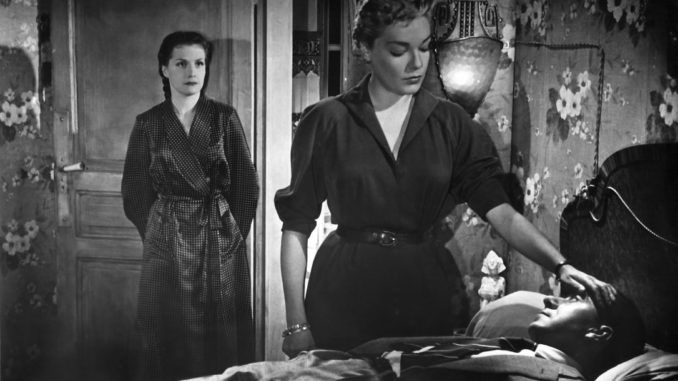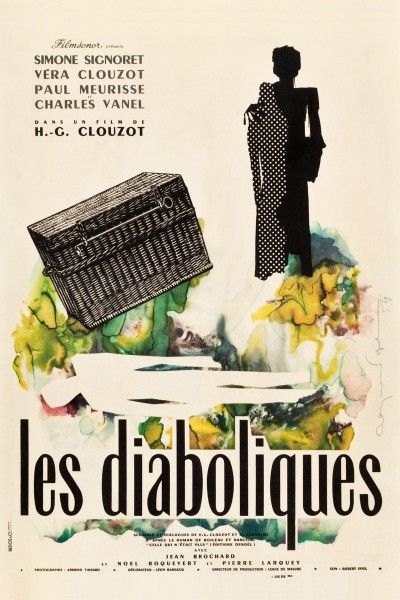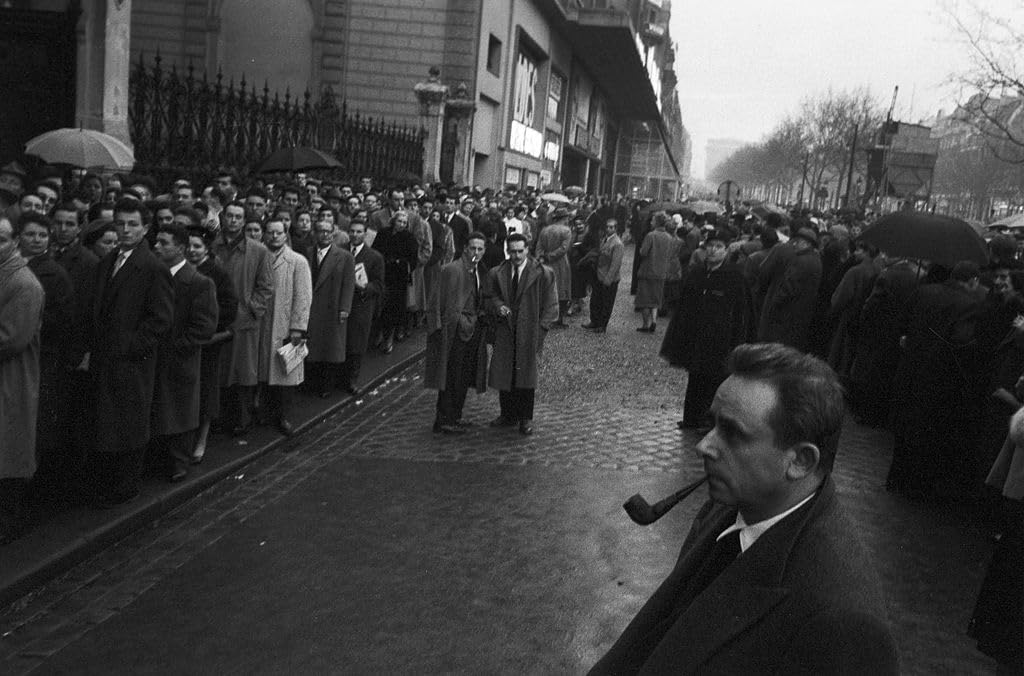
Rating: B
Dir: Henri-Georges Clouzot
Star: Simone Signoret, Véra Clouzot, Paul Meurisse, Charles Vanel
a.k.a. Diabolique
Don’t be DIABOLICAL!
Do not destroy the interest that your friends may have in this movie.
Do not tell them what you have seen.
Thank you, on their behalf.
So runs the caption at the end of this film, making an earnest plea to viewers at the time not to ruin the ending. With the movie’s release having celebrated its seventieth anniversary in January, I feel the statue of limitations has probably expired on spoilers. But just in case, consider this your warning. While I originally classed this as a thriller, viewing it through the lens of this feature, I can’t argue it qualifies as horror too, albeit much more of the psychological version. It’s impact on the Hammer horrors penned by Jimmy Sangster, such as Paranoiac., is particularly clear. The writer said, “They all went back to my original inspiration: Les Diaboliques. I’m not the only one to follow that path. I guess I just did it more than most.”
 It’s based on a 1952 novel, Celle qui n’était plus, by Pierre Boileau and Thomas Narcejac. The title translates as “She Who Was No More”, and as that implies, the plot there differs significantly from the movie version. In the book, it’s a husband and his mistress who team up to murder his wife. In the film, it’s the wife and mistress who plot to get rid of the husband. The source also allowed the killers to get away with their crime: the movie makes them pay for their crimes, albeit in a way which does feel rather tacked-on. It’s alleged that Clouzot just beat Alfred Hitchcock to acquiring the rights for an adaptation of the book. Hitchcock would subsequently use another novel by Boileau-Narcejac, turning it into Vertigo.
It’s based on a 1952 novel, Celle qui n’était plus, by Pierre Boileau and Thomas Narcejac. The title translates as “She Who Was No More”, and as that implies, the plot there differs significantly from the movie version. In the book, it’s a husband and his mistress who team up to murder his wife. In the film, it’s the wife and mistress who plot to get rid of the husband. The source also allowed the killers to get away with their crime: the movie makes them pay for their crimes, albeit in a way which does feel rather tacked-on. It’s alleged that Clouzot just beat Alfred Hitchcock to acquiring the rights for an adaptation of the book. Hitchcock would subsequently use another novel by Boileau-Narcejac, turning it into Vertigo.
Perhaps as thanks for having pointed him in the book’s direction, Henri-Georges cast wife Véra as school teacher Christina Delassalle, trapped by her religious beliefs in an unhappy marriage to the abusive Michel (Meurisse). He had an affair with another teacher, Nicole Horner (Signoret) – a fact with which Christina is remarkably chill. Oh, those French! Indeed, the two women remain besties, largely united by their mutual loathing of Michel. Nicole eventually convinces Christina to join her in a murder plot. They lure him away, serve Michel drugged whisky (top), then drown him in a bath. The plan is to dump the body in the school swimming-pool and make it look like an accident. However, when the pool gets drained, the corpse is nowhere to be found.
It’s likely true to say that the impact here is dimmed by the slew of movies to have used a similar concept since. As soon as I heard that Christina had a heart condition, I knew this wasn’t mentioned for the fun of it, and it would play an important role as things unfolded. It doesn’t help that Nicole looks the very embodiment of the predatory femme fatale. While forty years later, the American remake got a lot of things wrong, casting Sharon Stone in the equivalent role was spot-on. Nicole might as well come with a government health warning, like her many cigarettes. However, if I squint a bit, I can imagine the shock audiences of the time must have felt, comparable to that of watching Psycho, five years later.
Christina is the obvious weak point in the conspiracy. That’s why dogged detective Alfred Fichet (Vanel) applies pressure to her, after she shows up at the city mortuary, believing a corpse found in the Seine is her “missing” husband. I liked Fichet, who plays like Columbo: he comes over as bumbling, yet it’s a ploy to lull suspects into a false sense of security. He keeps picking away at Fichet, until she has had enough and confesses. This isn’t enough, given the absence of a corpse, and I did feel Fichet then overhearing the plotters celebrating was an awkward cludge. The director would have been better going with the book ending, though I’m not sure if France had an equivalent of the Hays code, where all criminal acts on film had to be punished.
Perhaps supporting this, it opens with an obvious self-referential quote from Barbey d’Aurevilly: “A portrait is always moral when it is tragic and shows the horror of the things it represents.” However, this was required in order for Clouzot to use his desired title, Les Diaboliques previously having been the title of a short story collection by d’Aurevily. Regardless, the film proved an enormous success – see the picture below, with Henri admiring the lines to get into his picture. While its cinematic impact has probably been dimmed by frequent repetition of its tropes since, I think it deserves to be placed in the category of “often imitated, rarely surpassed.”
This article is part of our October 2025 feature, 31 Days of Vintage Horror.

[Original review] Despite being largely underwhelmed by the US remake, got the chance to see the original, and… well, it’s better in most ways, even if this must be weighed against the loss of the surprise element the second time round. For the plot is almost the same (two women team up to kill one’s husband – but the corpse then vanishes), although the ludicrous, horror-movie cliche ending in the Stone and Adjani version is mercifully absent. The husband also comes across more solidly, as someone deserving of his fate. However, knowing the twist does work against the film, since your sympathies will be skewed wrong.
Signoret is blondely callous, and casting Sharon Stone in the remake is not exactly a stretch [Even her initials match!]. The director’s wife, Véra Clouzot, is the darkly frail other woman, and her significant-to-the-plot heart-complaint is very much more underplayed. On the other hand, the elements of black comedy seem pushed further to the fore, which is no bad thing, given that the central concept is pretty ludicrous. After seeing this, a remake which fails to add anything significant beyond the English language, looks more pointless than ever. B-
